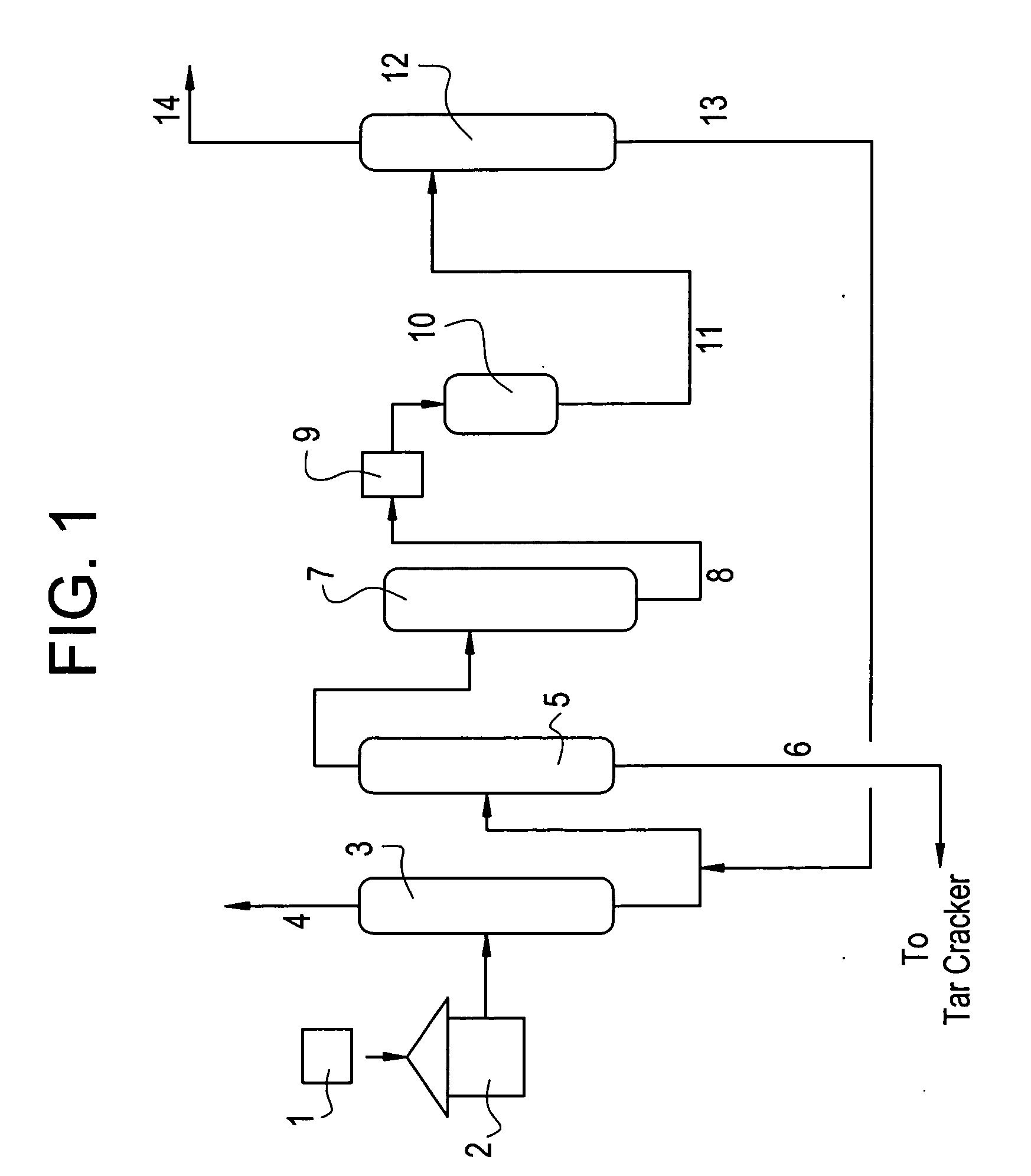Methods for purification of phenol
a technology of phenol and purification method, which is applied in the field of purification and recovery of phenol, can solve the problems of contaminating the final phenol product, and affecting the quality of the phenol product for many end-use applications
- Summary
- Abstract
- Description
- Claims
- Application Information
AI Technical Summary
Benefits of technology
Problems solved by technology
Method used
Image
Examples
example 1
[0022] In this example, a continuous process for reduction of HA and MBF from a synthetic mixture comprising phenol, HA, and MBF is described.
[0023] In a continuous reactor system, a synthetic mixture of phenol, HA (209 parts per million) and MBF (9 parts per million) was passed through a Bayer K2431 ion exchange resin (5 grams; 15% cross link by divinyl benzene obtained Bayer Co.) at 90° C. at a weighted hourly space velocity (WHSV) of 1.66 and a residence time of 0.6 hours. The amount of HA and MBF in the resulting treated phenol effluent was found to be less than 6 parts per million and less than 1 parts per million, respectively, as measured by gas chromatography (GC).
examples 2-5
[0024] These examples describe a continuous process for concurrent reduction of acetol and methylbenzofuran from the synthetic mixture comprising phenol, HA, and MBF as described in Example 1. The synthetic mixture comprising phenol, HA and MBF was passed through a Bayer K2431 (15% cross link by divinyl benzene obtained Bayer Co.) ion exchange resin (5 grams). The parts per million of HA and MBF before and after treatment with the ion exchange resin are included the Table I below.
TABLE IEffect of Temperature and WHSV on the reduction of HA and MBF fromphenolCatalyst BedExampleTemperatureHA (ppm)MBF (ppm)No.° C.WHSVBeforeAfterBeforeAfter290° C.1.02096522390° C.2.22096526490° C.3.22096526570° C.1.023463425
example 6
[0025] This example provides a continuous process for reduction of HA and MBF from an actual phenol plant feed.
[0026] In a continuous reactor system, the actual phenol plant feed containing phenol, HA (215.7 parts per million), MBF (22.33 parts per million), and other carbonyl impurities was passed through a Bayer K2431 (15% cross link by divinyl benzene obtained Bayer Co.) ion exchange resin (12.5 grams) at 70° C. for a period of 57 days. Data for the first 17 days is included in the Table II below.
TABLE IIEffect of time on the removal of HA and MBF from phenolstreamTime(hours)WHSVHA (ppm)MBF (ppm)Initial1.60215.722.33541.570.87617.81711.560.87615.67771.580.87616.24941.540.87616.521011.640.87616.741661.610.87621.021741.560.87621.801901.610.87620.141981.570.87620.372141.570.87622.382221.590.87621.623581.540.87627.723671.540.87626.883821.610.87626.943901.560.87626.854061.600.87626.424151.610.87628.39
[0027] It is observed that generally after about 166 minutes or greater, the MBF c...
PUM
| Property | Measurement | Unit |
|---|---|---|
| temperature | aaaaa | aaaaa |
| temperature | aaaaa | aaaaa |
| temperature | aaaaa | aaaaa |
Abstract
Description
Claims
Application Information
 Login to View More
Login to View More - R&D
- Intellectual Property
- Life Sciences
- Materials
- Tech Scout
- Unparalleled Data Quality
- Higher Quality Content
- 60% Fewer Hallucinations
Browse by: Latest US Patents, China's latest patents, Technical Efficacy Thesaurus, Application Domain, Technology Topic, Popular Technical Reports.
© 2025 PatSnap. All rights reserved.Legal|Privacy policy|Modern Slavery Act Transparency Statement|Sitemap|About US| Contact US: help@patsnap.com

